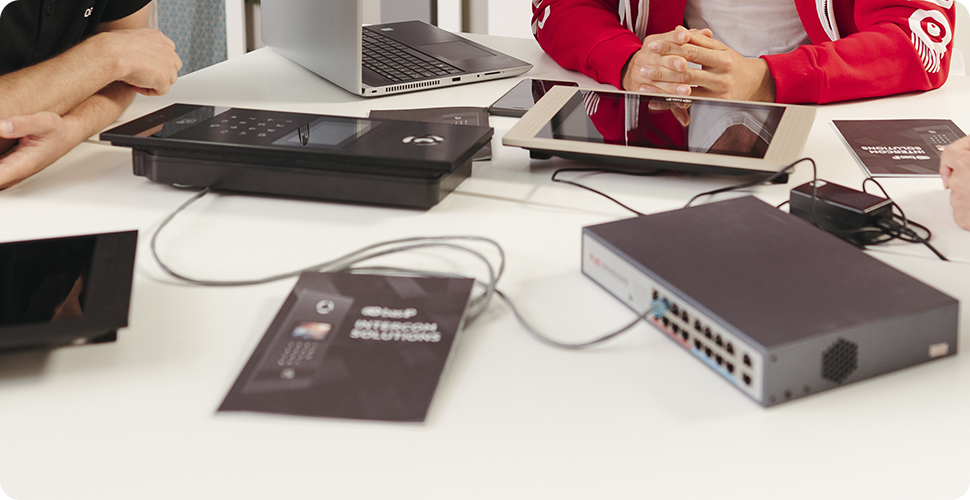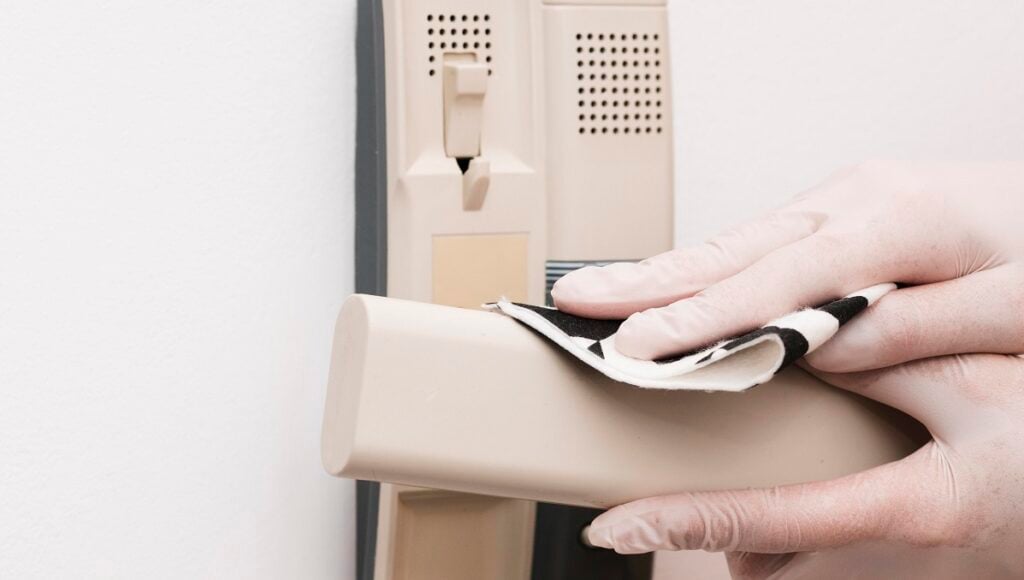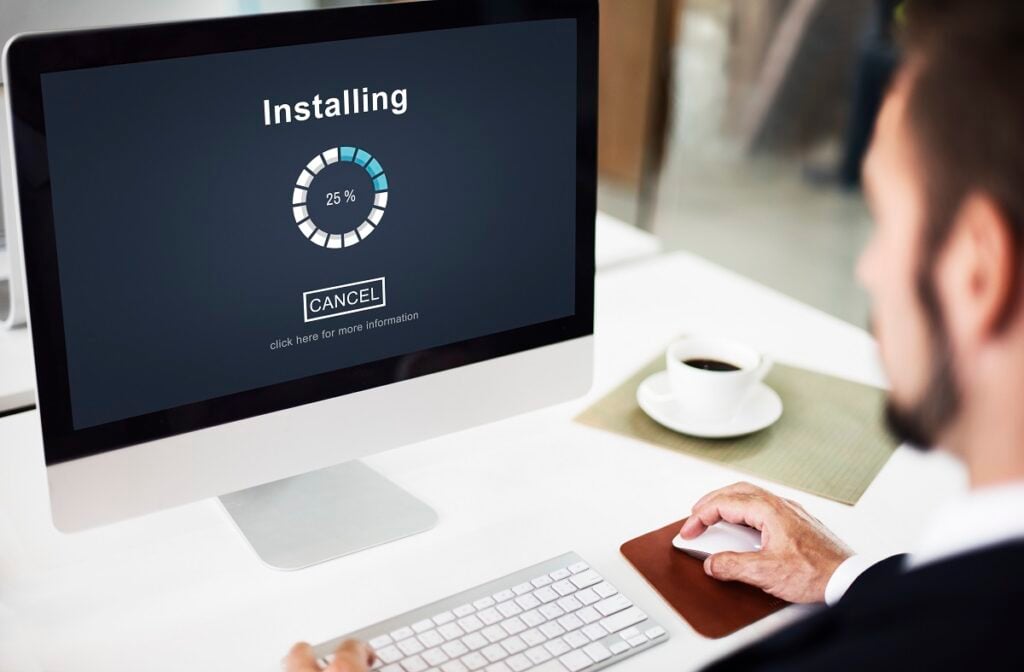Intercom Maintenance: How to Keep Your Device Running Smoothly

Intercom systems have become an essential part of modern living, providing convenience and security to both residential and commercial properties. Proper maintenance of your intercom system is crucial to ensure its longevity and effectiveness. This article will discuss the importance of intercom maintenance, the types of intercom systems, common issues, maintenance tips, and when to call a professional.
Table of Contents
Importance of Intercom Maintenance
Maintaining your intercom system is essential for several reasons. It ensures the system operates efficiently and effectively, provides clear audio communication, prevents security breaches, and extends the lifespan of your system. Furthermore, regular maintenance can help you avoid costly repairs or replacements in the long run.
Types of Intercom Systems
Wired Intercom Systems
Wired intercom systems such as BAS-IP rely on a physical connection between the door entry panel and the indoor stations. This type of system is generally more reliable and secure than its wireless counterpart but may require more maintenance due to the presence of wires and cables.
Wireless Intercom Systems
Wireless intercom systems use radio frequencies or Wi-Fi to connect the intercom stations. These systems are more flexible and easier to install but may be susceptible to interference and require more frequent maintenance to ensure reliable communication.
The Impact of Environmental Factors on Intercom Maintenance

Environmental factors play a significant role in the maintenance and longevity of intercom systems. These factors can range from weather conditions such as rain, snow, and temperature fluctuations, to location-specific conditions like humidity, dust, and salt in coastal areas.
Intercom systems, especially those installed outdoors, are exposed to these elements and can suffer from wear and tear over time. For instance, moisture from rain or snow can seep into the system, causing damage to the electrical components. Similarly, dust and dirt can accumulate and interfere with the system’s functionality. In coastal areas, the salt in the air can cause corrosion, affecting the system’s performance and lifespan.
To combat these challenges, it’s crucial to choose intercom systems designed to withstand these environmental conditions. One such solution is the waterproof intercom systems offered by BAS-IP. These systems are specifically designed to resist exposure to water and other elements, making them ideal for outdoor installations or areas prone to moisture.
Common Intercom Issues

Poor Audio Quality
Poor audio quality can result from a variety of issues, including damaged wiring, interference, or malfunctioning components. Check all connections, ensuring they are secure and free of damage. Regular maintenance can help identify and address these issues before they become more severe.
Power Failures
Power failures can cause intercom systems to become non-functional. Regularly inspecting and maintaining the system’s power supply can help prevent such issues. Inspect the power supply for any issues, such as blown fuses or tripped breakers. Reset the intercom system by powering it off and then on again.
Connectivity Problems
Wireless intercom systems may experience connectivity issues due to interference or signal loss. Regular maintenance can help identify and address these problems, ensuring consistent communication. Ensure the signal is strong and free of interference.
Basic Intercom Maintenance Tips
Regular Cleaning
Dirt and debris can accumulate on the intercom system components, affecting their performance. Regular cleaning of the system can help prevent this issue.

Visual Inspections
Performing regular visual inspections can help identify any potential issues with the intercom system, such as damaged wires, loose connections, or physical damage to the components.
Software Updates
Keeping the intercom system’s software up-to-date is essential for optimal performance and security. Regularly check for updates and install them as needed.

Intercom Maintenance Checklist
- Visual Inspection:
- a. Check the overall condition of the intercom system, including the master station, sub-stations, and wiring.
- b. Inspect for any signs of damage, corrosion, or loose connections. c. Ensure that all components are securely mounted and properly aligned.
- Cleanliness:
- a. Gently clean the master station and sub-stations with a soft cloth, removing any dust, dirt, or debris.
- b. Clean any microphone and speaker grilles with a small brush to remove any accumulated dust or dirt.
- Power Supply:
- a. Verify that the power supply is functioning properly and providing the correct voltage.
- b. Check for any signs of damage or wear on power cables and connectors.
- c. Ensure that all power connections are secure.
- Wiring and Connections:
- a. Inspect all wiring for signs of wear, damage, or corrosion.
- b. Ensure that all connectors are properly seated and secure. c. Test the continuity of the wiring using a multimeter, if necessary.
- Audio Quality:
- a. Test the audio quality of the intercom system by making a call between the master station and sub-stations.
- b. Verify that the audio is clear and free of distortion, static, or interference.
- c. Adjust the volume levels, if necessary, to ensure comfortable listening levels.
- Functionality:
- a. Test all intercom features, such as door release, monitoring, keypad, ACS reader.
- b. Verify that all buttons and controls are functioning properly and are responsive.
- c. Check that any indicator lights or displays are functioning correctly.
- Software/Firmware:
- a. Check for any available software or firmware updates for the intercom system.
- b. If updates are available, follow the manufacturer’s instructions to install them.
- c. Perform a system reboot, if necessary, to ensure proper installation of updates.
- Backup and Restore:
- a. If applicable, perform a backup of the intercom system’s settings and configurations.
- b. Verify the integrity of the backup and store it in a secure location.
- Documentation:
- a. Record the maintenance activities performed and any issues encountered during the process.
- b. Note any necessary repairs or replacements that need to be made.
- c. Update the intercom system’s maintenance log accordingly.
- Schedule Future Maintenance:
- a. Set a reminder for the next recommended maintenance interval based on the manufacturer’s guidelines or your specific needs.
- b. Order any necessary replacement parts in advance to ensure timely maintenance.
By following this intercom maintenance checklist, you can ensure the continued reliable operation and optimal performance of your intercom system.
Training for Intercom System Maintenance

Proper training is essential for maintaining an intercom system, especially for larger residential complexes or commercial properties. Training can help individuals understand the system’s workings, identify potential issues, and carry out basic maintenance tasks. Here are some key areas that such training might cover:
- Understanding the System: The first step in any training should be to understand the system’s components and how they work together. This includes understanding the different parts of the system, their functions, and how they interact.
- Basic Maintenance Tasks: The training should cover basic maintenance tasks such as cleaning the system, checking for loose connections, updating software, and testing the system’s functionality.
- Troubleshooting: Training should also include troubleshooting common issues. This could involve identifying symptoms of common problems, understanding potential causes, and learning how to resolve these issues.
- Advanced Maintenance: For more complex systems, advanced maintenance training might be necessary. This could include tasks like replacing components, dealing with wiring issues, or adjusting system settings.
- Safety Procedures: Safety should be a key part of any training. This includes understanding the safety risks associated with maintaining the system, learning how to work safely, and knowing when to call in a professional.
- Documentation: Finally, training should cover how to document maintenance activities. Good documentation can help track the system’s health over time, making it easier to identify potential issues and plan for future maintenance.
Remember, the goal of training is not just to maintain the system but also to extend its lifespan and ensure it operates at peak efficiency. With proper training, individuals can become proficient in maintaining their intercom system, saving time and potentially reducing costs in the long run.
Conclusion
In conclusion, the maintenance of your intercom system is not just a recommendation, but a necessity. Regular upkeep ensures the longevity, efficiency, and security of your system, whether it’s wired or wireless. By addressing common issues such as poor audio quality, power failures, and connectivity problems, you can prevent costly repairs or replacements in the future.
The importance of regular cleaning, visual inspections, and software updates cannot be overstated. These simple steps can make a significant difference in the performance of your intercom system. Moreover, the detailed intercom maintenance checklist provided in this article serves as a comprehensive guide to help you cover all aspects of maintenance, from visual inspection to software updates.
Remember, maintenance is not a one-time task but a continuous process. Regular documentation of your maintenance activities and scheduling future maintenance based on the manufacturer’s guidelines or your specific needs will ensure the smooth operation of your intercom system.
In the end, the goal is to ensure that your intercom system continues to provide you with the convenience and security you need. By following the maintenance tips and checklist provided, you can achieve this goal and extend the lifespan of your intercom system.